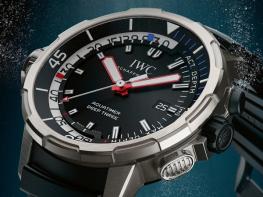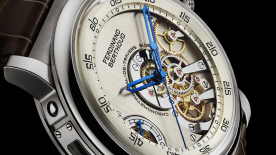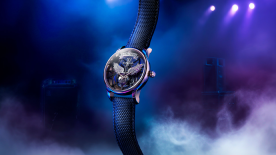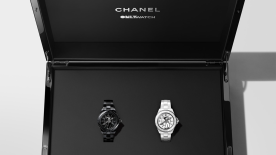There won’t be many watches released this year that take their design cues from a piece launched in the early 1980s, much less whole collections. That thought in mind, IWC’s decision to ingrain its latest line-up with the look of a model launched in the decade that traditional watchmaking forgot is a bold one.
But for all that the early 1980s are remembered by the watch industry rather as you would the feeling of falling off a bike as a child, the decision stacks up. The 80s model in question is Ferdinand A. Porsche’s Ocean 2000, a piece penned for IWC in 1982 that’s become a collector’s forum favourite for its gritty aesthetic and the Teutonic efficiency of its form.
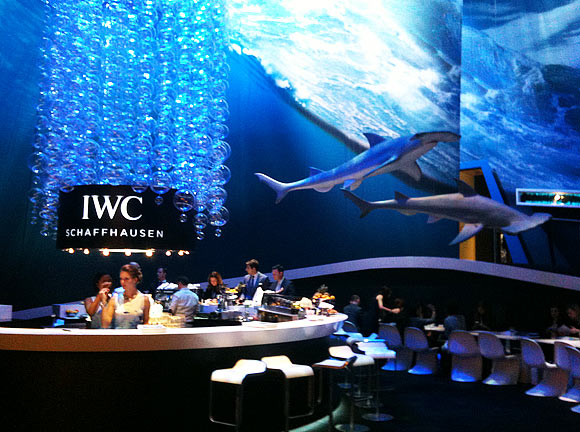
The news is that it’s those same qualities that come to the fore in the brand’s new Aquatimer collection, launched this week at SIHH. Now, prepare yourselves – this is not IWC’s prettiest watch family. Not by far. But then it never has been. And on speaking to Christian Knoop, IWC’s creative director and the brains behind the new concept, you quickly get the impression that’s sort of the point anyway.
‘We had two main objectives when we were thinking about relaunching the family,’ says Knoop. ‘On the one hand, we wanted to bring more manufacture movements to the Aquatimer line, and on the other we wanted to upgrade the line in terms of function and aesthetics, and to find something that would give it an IWC USP.’
That USP is not in decoration or mechanical innovation. And certainly not in prettiness. Instead, it’s in a novel, ingenious system found in each of the new Aquatimer models that allows the user to adjust the watch’s inner rotating bezel by turning its outer bezel.
‘IWC is known for an inner rotating bezel,’ says Knoop. ‘The first diver’s watch we launched in 1967 had an inner rotating bezel, which was operated with a second crown. This became the signature element for IWC diving watches for many decades.’
The exceptions to this rule, he points out, were the GST of the 1990s and the previous Aquatimer collection, which broke with IWC convention by featuring an outer rotating bezel.
‘We’re taking the best from both worlds and creating a new technical function, for which we’ve filed a patent,’ he says of the system, which is known as SafeDive. ‘This delivers exceptional functionality, but also a very particular aesthetic, which sets our watch range apart from the rest of the market.’
The gearing system behind the function is tucked away under a covering that sits on the case at 9 o’clock (which has been mistaken for a second crown or a helium valve by some early theorists – it isn’t), except on the 46mm titanium Deep Three, where it’s been rotated to 4 o’clock to balance the design, which includes a depth gauge reset button at 2 o’clock.
The SafeDive’s outer bezel rotates in both directions, but only engages with the inner bezel when turned anti-clockwise, ensuring the usual dive-time securities provided by a traditional uni-directional turning bezel.
Aesthetically, the bezel is the spit of the design featured on the Ocean 2000. Knoop has said before that he feels it’s his responsibility as the current custodian of the IWC look to keep one eye on the brand’s heritage and one on its future, and here he’s been faithful both to the history books and to his own mantra.
There are nine different models in the new line-up (an increase on the five launched in 2009), some of which have to be seen to be believed. Chief among those is the flagship Aquatimer Perpetual Calendar Digital Date-Month, a 49mm hunk of titanium that’s both an elite expression of haute horlogerie and a utilitarian tool capable of keeping track of the inconsistencies of the Gregorian calendar while 120 metres underwater. For those questioning the logic behind the combination, Knoop describes this piece as a collector’s item – only 50 will be made.
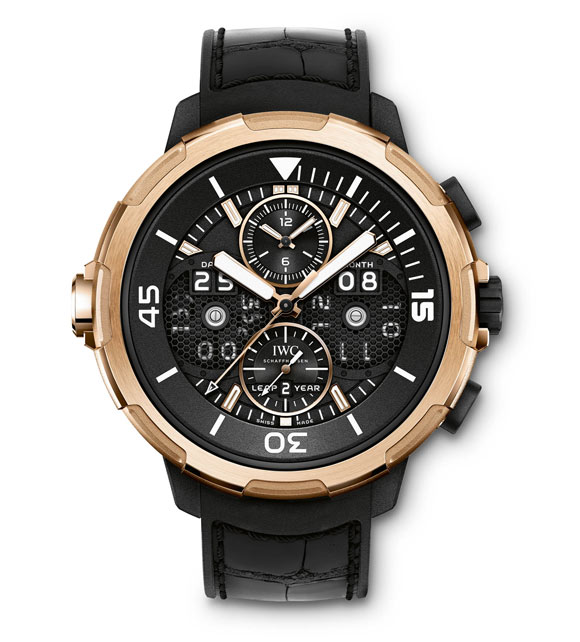
As collectable, you would imagine, will be the Aquatimer Chronograph Edition ‘Expedition Charles Darwin’, which is cast in bronze, a material IWC is using for the first time.
Given its organic qualities – ie that it’s soft and oxidises quickly, changing colour and developing a patina in a surprisingly short amount of time – it might come as a surprise to some that IWC, a brand normally associated with words like precision and engineering, has embraced bronze. ‘The way bronze ages over time brings a new dimension to the range of materials we offer,’ says Knoop. ‘And I believe people will appreciate that.’
It’s no ordinary bronze, though. According to Knoop, IWC has sourced a rare bronze alloy that’s ‘50 per cent harder than the materials our competitors are using’. Exact details remain under wraps, but it’s certified biocompatible and hypoallergenic.
Links to Darwin feature in two further models, both of which will support the Charles Darwin Foundation’s work on the Galapagos Islands, a partnership IWC have fostered since the launch of the last Aquatimer collection in 2009.
The Aquatimer Chronograph Edition ‘50 Years Science for Galapagos’ has been made to mark the 50th anniversary of the Charles Darwin Research Station and is limited to 500 pieces. It’s coated in rubber, as is the non-limited Aquatimer Chronograph Edition ‘Galapagos Islands’. All three feature IWC’s in-house 89365 chronograph calibre.
IWC’s relationship with the Cousteau Society now dates back 10 years and two Aquatimer collections. The Aquatimer Chronograph Edition ‘Expedition Jacques-Yves Cousteau’ continues the tradition of watches celebrating the great marine conservationist’s life.
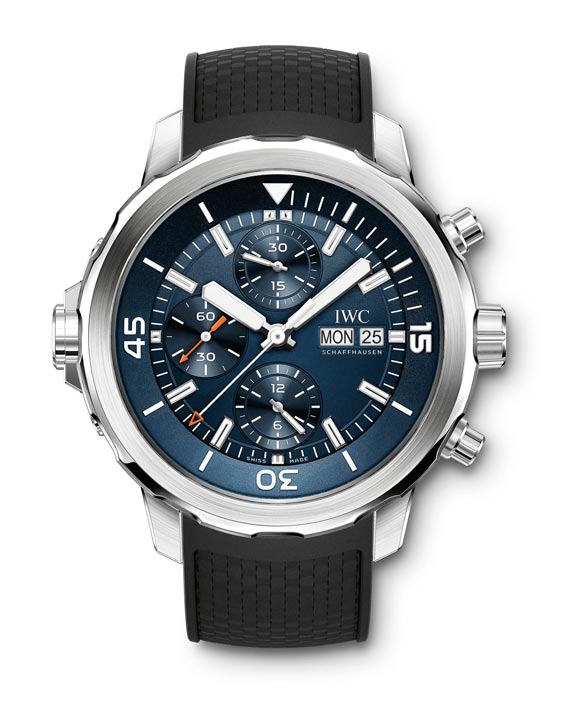
Beyond these, there are core collection chronograph and automatic models, the latter of which will be the smallest in the range at 42mm. The 46mm Grade 5 titanium Aquatimer Automatic 2000 completes the set – as the name suggests, it’s water-resistant to an impressive (but unnecessary) 2,000 metres. Note the use of titanium in the collection – IWC (together with Porsche) pioneered the material in watchmaking in the late 1970s and Knoop has faithfully brought it back after a brief hiatus.
None of the new Aquatimers features a helium escape valve, an interesting development. ‘We discussed this point,’ says Knoop. ‘Our view is that this function is for deep-sea divers, who stay in a helium enriched atmosphere before they dive. The divers who go for really deep dives and need helium escape valves make up a very small percentage, so we decided it wasn’t worth integrating them into this watch.’
That, despite the commendable logic, is clearly one of many bold decisions behind this bold new collection, a collection that in the Perpetual Calendar Digital Date-Month features the second largest watch IWC has ever made.
‘We wanted to have a collection that can be immediately identified as typically IWC,’ says Knoop. ‘We wanted to do something that has this very technical, but at the same time typical purity IWC is known for. There are an incredible number of diver’s watches out there – we wanted to have something that can not only be identified as IWC, but which will stand out immediately.’
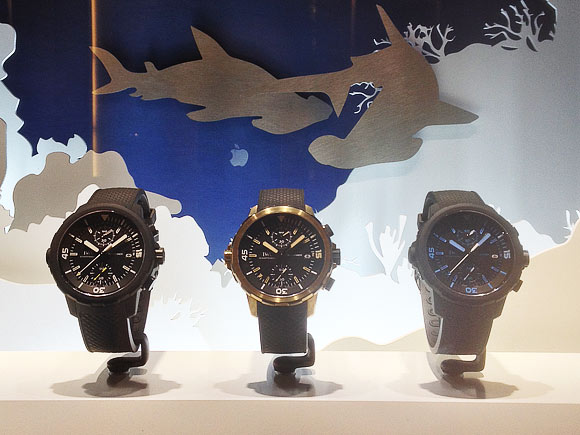
Click on the picture on top of the page for more photos
